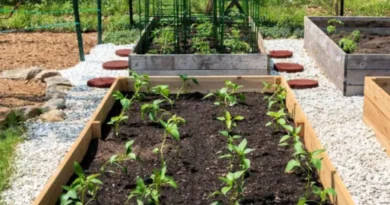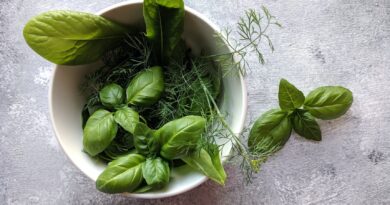Exploring Soil pH, Nutrient Balance, and Growth Factors: A Guide for Allotment Gardeners
As any gardener knows, the success of your plants depends heavily on the quality of your soil. But what makes for “good” soil? In this post, we’ll explore some of the basic science behind soil composition and how you can optimize it for healthy, thriving plants.
First up: pH. This refers to the acidity or alkalinity of your soil, which can greatly affect which plants will thrive there. Most plants prefer a pH range of 6.0 to 7.5, but some, like blueberries and azaleas, prefer a more acidic soil (closer to a pH of 5.0). You can purchase a simple soil testing kit to determine your soil’s pH level and make adjustments as needed.

To adjust your soil’s pH level, you can add amendments like lime to raise the pH (make it more alkaline) or sulfur to lower the pH (make it more acidic). Be sure to follow the instructions carefully, as adding too much of any amendment can have negative effects on your soil’s balance.
Next, let’s talk about nutrients. There are three primary macronutrients that plants need to grow: nitrogen, phosphorus, and potassium (often abbreviated as NPK). Nitrogen is essential for leaf growth, while phosphorus promotes root and flower growth, and potassium helps plants withstand stress and disease. You can purchase fertilisers that contain various combinations of these nutrients, or use organic methods like composting and crop rotation to naturally replenish your soil’s nutrient levels.
It’s important to note that too much of any nutrient can also have negative effects on your soil’s balance. For example, too much nitrogen can cause excessive leaf growth at the expense of flowers or fruit. Be sure to follow recommended application rates for any festilisers or amendments.

But it’s not just about the big three – plants also need a variety of micronutrients, like calcium, magnesium, and sulfur, in smaller quantities. These are often present in healthy soil naturally, but can become depleted over time if not replenished.
To ensure your soil has a good balance of micronutrients, you can add amendments like limestone for calcium or Epsom salt for magnesium. Again, be sure to follow instructions carefully and avoid over-application. The lime below has provided excellent results.
Another factor to consider is soil structure. Good soil structure allows for proper drainage and aeration, which in turn promotes healthy root growth. You can improve soil structure by adding organic matter like compost, which also helps to improve nutrient levels.
In addition to compost, you can also use other organic materials like leaves, straw, or wood chips to improve soil structure. These materials break down slowly over time, providing a continuous source of nutrients for your plants.

Understanding Soil pH Levels for Different Crops
Maintaining the optimal pH level in your soil is crucial for the healthy growth of various fruits and vegetables. Different crops have different preferences when it comes to soil acidity or alkalinity. Here’s a breakdown of some common crops and their preferred pH ranges:
- Acid-Loving Crops (pH 4.5-6.0):
- Blueberries: These berries thrive in acidic soil conditions, with a pH range of 4.5 to 5.5.
- Potatoes: Potatoes prefer slightly acidic soil, with a pH range of 5.0 to 6.0.
- Rhododendrons and Azaleas: These ornamental plants prefer acidic soil with a pH range of 5.0 to 5.5.
- Strawberries: Strawberries grow best in slightly acidic soil, with a pH range of 5.5 to 6.5.
- Blueberries: These berries thrive in acidic soil conditions, with a pH range of 4.5 to 5.5.
- Neutral pH Crops (pH 6.0-7.0):
- Beans: Most bean varieties, including green beans and snap peas, grow well in neutral soil conditions with a pH range of 6.0 to 7.0.
- Carrots: Carrots prefer slightly acidic to neutral soil, with a pH range of 6.0 to 7.0.
- Lettuce: Lettuce is versatile and can tolerate a wide range of pH levels, but it generally thrives in neutral soil conditions.
- Spinach: Spinach grows well in neutral soil with a pH range of 6.5 to 7.5.
- Beans: Most bean varieties, including green beans and snap peas, grow well in neutral soil conditions with a pH range of 6.0 to 7.0.
- Alkaline-Loving Crops (pH 7.0-8.5):
- Brassicas (Cabbage, Broccoli, Kale): Brassica crops prefer slightly alkaline soil conditions, with a pH range of 6.5 to 7.5.
- Onions: Onions thrive in slightly alkaline soil, with a pH range of 6.2 to 6.8.
- Peas: Peas prefer slightly alkaline soil conditions, with a pH range of 6.0 to 7.5.
- Tomatoes: While tomatoes can tolerate a wide range of pH levels, they generally prefer slightly alkaline soil conditions.
- Brassicas (Cabbage, Broccoli, Kale): Brassica crops prefer slightly alkaline soil conditions, with a pH range of 6.5 to 7.5.
- Adjusting Soil pH:
- To lower soil pH for acid-loving plants, you can amend the soil with organic materials like peat moss, pine needles, or elemental sulfur.
- To raise soil pH for alkaline-loving plants, you can add agricultural lime or wood ash to the soil.
- It’s essential to regularly test your soil pH and make adjustments accordingly to ensure optimal growing conditions for your crops.
- To lower soil pH for acid-loving plants, you can amend the soil with organic materials like peat moss, pine needles, or elemental sulfur.
By understanding the pH preferences of different crops, you can make informed decisions about soil amendments and create an environment where your plants can thrive. Regular soil testing and pH monitoring will help you maintain healthy soil and maximize your garden’s productivity.

It’s important to consider the texture of your soil. The ideal soil texture is a mix of sand, silt, and clay, which allows for good water retention and drainage. You can determine your soil texture with a simple “squeeze test” – grab a handful of moist soil and squeeze it into a ball. If it crumbles easily, you likely have sandy soil; if it holds its shape but breaks apart when poked, you likely have loamy soil; and if it forms a hard ball, you likely have clay soil.
To improve soil texture, you can add amendments like sand or organic matter. For example, adding sand to clay soil can improve drainage and prevent waterlogging, while adding organic matter to sandy soil can help it retain moisture.
By understanding these basic principles of soil science, you can optimise your allotment soil for healthy, thriving plants. Happy allotment gardening!




